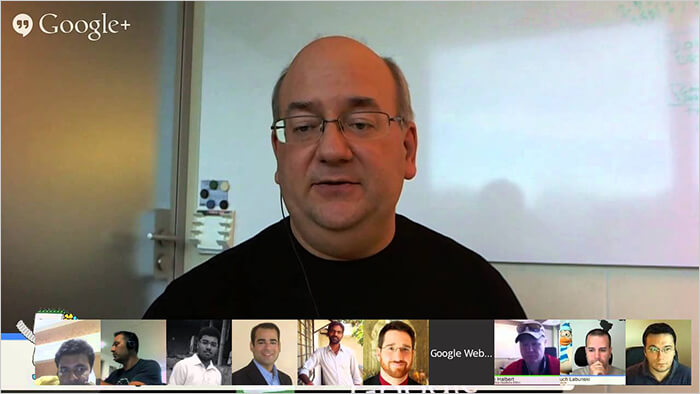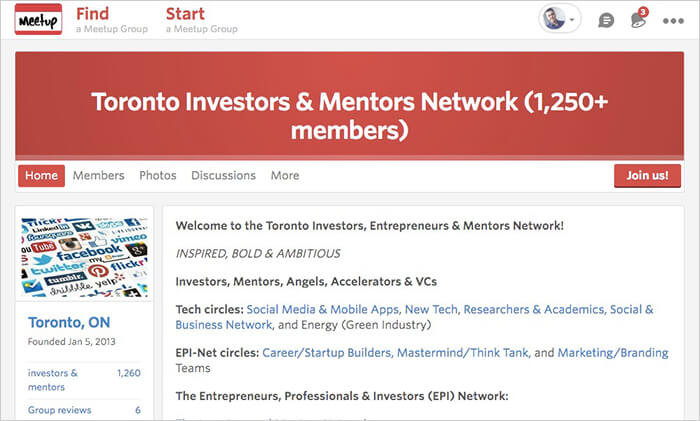· by Corey Ferreira

What if I told you that you can put yourself in a better position to succeed by simply sharing your time, either once a week or once a month, with other like-minded and motivated individuals?
Successful individuals such as Benjamin Franklin, J.R.R. Tolkien, Henry Ford and Thomas Edison, all met with groups of like-minded people on a regular basis, to help one another achieve common goals and grow. Today, this is called a “mastermind”, first coined by Napoleon Hill in 1925. In this article, I'm going to go over what a mastermind group is, how it can benefit you and your business, and how to form one, step-by-step.

Thomas Edison (left) and Henry Ford (right)
What Is a Mastermind?
A mastermind is a peer-mentoring group of individuals who meet on a regular
basis (in-person or virtually) to push each other to work to their highest potential
and hold each other accountable. Many successful entrepreneurs today, from
Bill Gates to Pat Flynn, use masterminds to help grow their business and work
on their personal development.
Jim Rohn, author and motivational speaker, tells us that we are the average of
the five people we spend the most time with. Are the people you spend the most
time with helping you with your personal development and business’ growth?
This is where participating in and being a part of a mastermind group can
improve that.
Why Join a Mastermind?
Accountability: The first reason I recommend any entrepreneur join a
mastermind group is because the people in that group will keep you accountable.
Every week, in my mastermind group, we ask each member how their business
is progressing and if they followed through on what they planned to do last week.
I never want to let the individuals in my group down, so when I say to the
members in my group that I am going to do something, you can bet I wind up
doing it to tell them about it the next time we meet.
Feedback: A mastermind group will give you feedback from people who are
trying to build a business just like you. They have a special insight and mindset
that is hard to find. Other like-minded entrepreneurs will tell you what’s wrong or
right about your ideas with no bias. They are not your customers and they are
not your competitors.
The people in your group can be your best source of advice at times when you’re
unsure where to turn to. The members in my group have a very unique yet
relevant perspective. This makes for some amazing feedback that has helped
me tremendously when it comes to what direction to go in and what next steps
to take for my business.
Collaboration: Not only does your mastermind group allow you collaborate on
ideas but you can help people or get people in your group to help you with
projects or tasks. While this isn’t the main function of a peer-mentoring group,
as a result of meeting with other talented entrepreneurs on a regular basis, you
might find opportunities to work with other members in your group.
There’s also an opportunity for you to cross-promote with other members in your
group. Everyone in your group will likely be using social media and maybe even
have a blog. In my mastermind, I’ve promoted their content on my Twitter account
in exchange for being featured and interviewed on their blog.
Network: This is also a great way to network. You might connect with people,
who know other people, that might be able to help you out or that you might be
able to help out. The more you expand your network, the more doors open up
for you.
Having connections and knowing people who might know people in various
industries can come in handy when you least expect it.
Resourceful: The members in your group will likely be very diversified with
many different specialties and areas of knowledge. Maybe you’re someone
with a lot of knowledge in marketing but you need help with design. If there’s
another member in your group that has a design background, you can help
them with marketing while they help you with design.
The blending of different backgrounds, skills and knowledge creates a fantastic
environment for you to learn, play off of your strengths and correct your
weaknesses. I’ve learned a lot from the members of my mastermind group
about topics I previously had no knowledge about. There will always be something
unique that you can bring to your mastermind group and that others will bring
that will be of value to you and the rest of the group.
Support: Besides being a support group to encourage you and keep you going
when you encounter hard times in your business, your mastermind can be a
place where members can get their questions answered and solutions to their
problems.
Every week in my mastermind, someone is blown away by the quality of help and
solutions they receive to their problems. It never ceases to amaze me how
creative we can get, as a group, to tackle someone’s issues in that meeting.
What a Typical Mastermind Might Look Like
To give you an idea of what a mastermind looks like, here’s what mine looks like:
Every Tuesday night, I meet with three other online entrepreneurs. We meet using
Google Hangouts, which is a free video call/chat software that is easy to use.

Once we all get on, we begin with a round-table style discussion. Each person has
the chance to give everyone else an update on their business, their challenges
and wins since the last meeting.
After everyone gets the opportunity to update the group, we usually feature or
“hot seat” someone every meeting. This person gets the opportunity to go deeper
with their challenges, and they also get a chance to get feedback from the group.
Every meeting, the featured person changes. Sometimes, someone is featured
simply because they might need the most help at that time. Most of the time
however, everyone has a shot to be in the hot seat.
Sometimes the mastermind meeting will be more informal than this, and we just
discuss our businesses as a group. Some of my best takeaways came when our
sessions were informal and didn’t follow a structure.
These sessions usually don’t go on for more than an hour and they are extremely
beneficial and a great investment of my time, every meeting.
How to Find or Form a Mastermind
The first thing you need to do is go where people like yourself congregate. If
you’re an ecommerce entrepreneur, you don’t need to strictly look for other
ecommerce entrepreneurs, instead look for other motivated entrepreneurs in
any industry.
I recommend first starting with Meetup.com if you’re interested in meeting up with
other entrepreneurs in person. Meetup.com has many groups of local
entrepreneurs looking to connect that you can easily join for free. If you can’t find
one, consider starting your own.

If you’re more interested in an online mastermind, I would recommend going to
forums and Facebook groups for online entrepreneurs and ecommerce
entrepreneurs.
You will probably have to take the initiative in these groups and ask if anyone else
is interested in forming a mastermind with you. Don’t be afraid to put yourself out
there.
As long as you don’t make it all about you and you are genuine in wanting to
create a peer-mentoring group where entrepreneurs can help one another and
grow together, people will be interested. Here’s a script similar to what I used
when I was looking for other people to form a mastermind with me.
Hey everyone,
My name is Corey, I’m an entrepreneur and CEO of X. I’m interested in
starting a mastermind, aka peer-mentoring group, with a few other motivated
and ambitious entrepreneurs. You don’t need to be extremely knowledgeable or
very successful. I’m just looking to meet with other entrepreneurs on a weekly
basis, on Google Hangouts, where we can help one another and grow together.
If you’re a positive person and serious about your business, I’d love to have you
be a part of my mastermind group.
[a section talking about what you bring to the table, your specialities, skills and
experience.]
If you’re interested, give me a little background on yourself, what you’d like to
get out of this mastermind group, and what you think you can contribute and I’ll
contact you!
From here, you will want to contact the interested individuals you think you would
get along with and make a good fit for your group. It’s a good idea to vet everyone
that is interested to first, ensure that they’re serious about joining the group, and
second, to see if their goals and values align with yours and the rest of the group’s.
Once you get everyone’s emails, send out a spreadsheet, using Google Docs, to
quickly determine everyone’s availability. Use this spreadsheet template to help you
see what everyone’s availability is. You ideally want to have a weekly or monthly
meeting at the same time and day every week to make it easy for everyone.

Once you see an alignment and a date and time that works for everyone, it’s time
to contact all your members and schedule the first mastermind session.
Running Your First Mastermind
You should let your new group know what the structure will be like for the very
first meeting. You’re all strangers and there might be some members who are
nervous, so let them know what to expect to ease their anxiety.
Make it clear that the first meeting will be very informal and casual. Everyone should
get an opportunity to introduce themselves, talk about their business and what they
hope to get out of this mastermind group.
Tips
1. In the beginning, at least for the first several meetings, follow a format or keep to
a structure for the meetings until there’s a lot of chemistry in the group.
2. Use software like Google Hangouts. Skype and Zoom are good alternatives as
well. It’s best to ask your group, when you first send out the scheduling
spreadsheet, what software they use or prefer.
3. It’s a good idea to try and find someone who is experienced and has run or
participated in masterminds before (or even is already in one) to make your
sessions run smoother since they can take the lead for those first few meetings.
4. While there’s no ideal number of members for your group, try to keep it relatively small. In my experience, a group size of 4-6 people works best. With too many members, the meetings might be too long and there might not be enough time for people to get an equal opportunity to share and get value
Go out and Find a Mastermind
Now it’s your turn. You will need to take the initiative. You will need to put yourself
out there and find the right people.